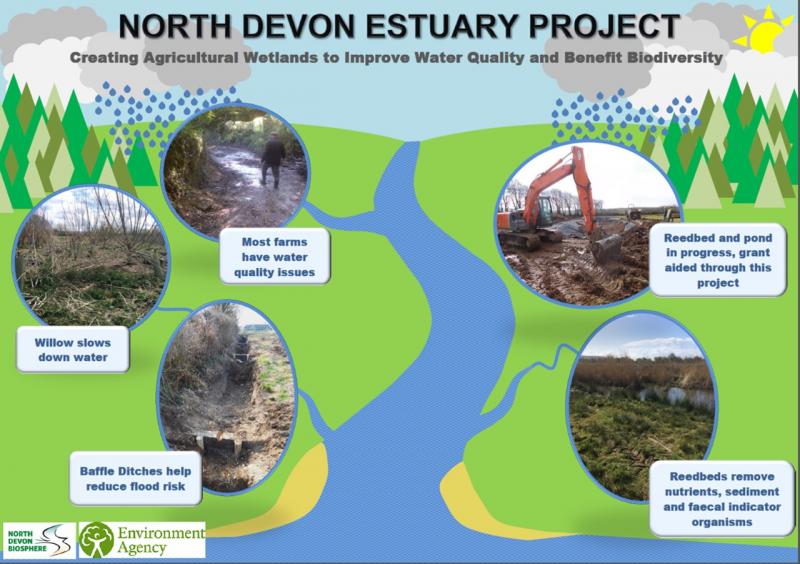
The North Devon Biosphere Reserve's Estuary Project addressess directly the link between farming effluents and river, estuary and sea pollution.
Kate Hind has been working with local farmers to address a range of farming pollutants including animals wading in watercourses, sediment runoff from fields and slurry drainage from dairy farming.
Kate herself has a love of marine biology and studied it before working for a spell in Fiji and Greece on marine-related issues. She made her way to North Devon where she works part-time for the Biosphere Partnership and as a lecturer in Environmental Studies at Petroc.
The Estuary Project is funded by an Environmental Agency grant and seeks to address water quality and its dependents, biodiversity and the potential for aquaculture and recreation.
The project methodology is to adopt a low-tech approach, involving good land husbandry, diversion of runoff flows, stilling-ditch sediment traps and reed-bed wetland water treatment. As well as improving water quality, this approach also increases runoff holdup, with improved flood attenuation.
Gaining the attention of hard-pressed farmers is not easy, but after some false starts Kate has found that with a direct and sympathetic approach the majority are very keen on improving their land, environment and local wildlife. Their problem is frequently not one of motivation, but simply not knowing where to start on a sometimes complex set of problems. Here all that is needed is credible advice, and Kate showed local farms where this, with some funding, has been put into action with good results. These then become examples for others, and gradually good practice should become the norm.
The second year of the project has targetted the area of high cattle density north of Barnstaple where there are 26 farms. You can read more about the project and download a progress report at :- www.northdevonbiosphere.org.uk/estuary-project.html
Although the project has a limited life, Kate has demonstrated that proven low-cost methods can have a significant impact on a range of environmental problems, and hopefully those method will become embedded locally.
Pictured R are, from top, the various elements of the project, Sedimentation pond constructed for the project, baffle ditches to trap runoff sediment, biological water improvement by reedbed.

